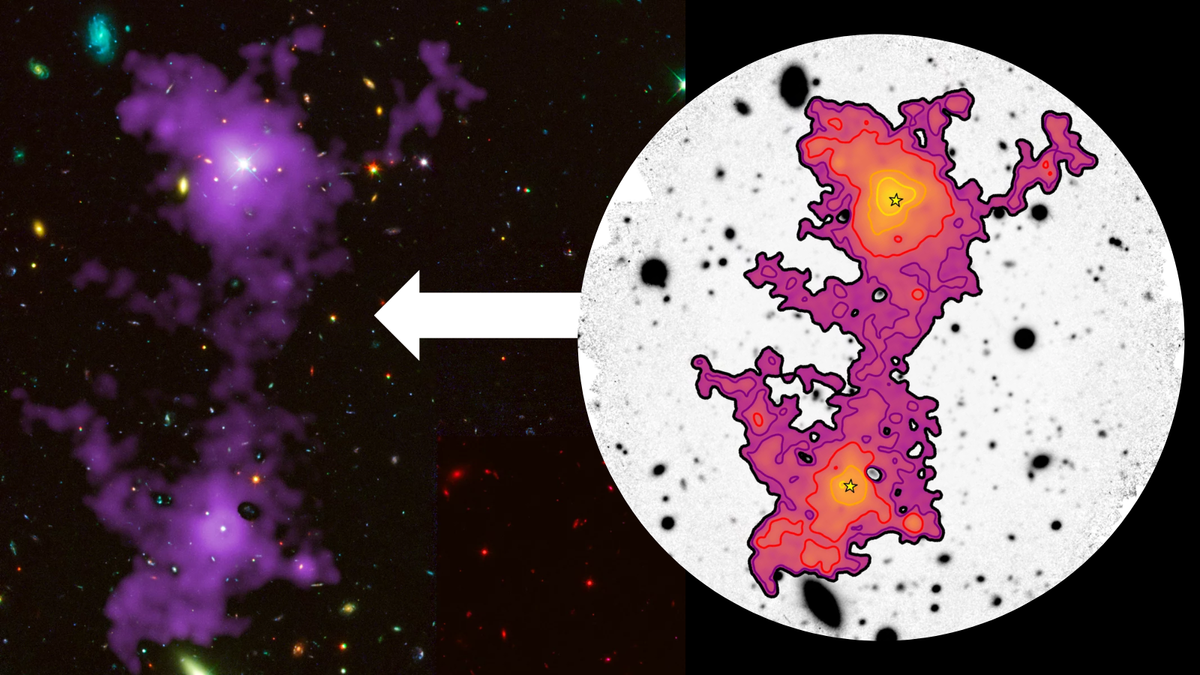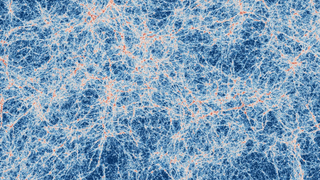From - Space. Com
By -

Astronomers have imaged a spectacular thread in the cosmic web, connecting two actively forming galaxies that existed when the universe was just 2 billion years old. Both galaxies at hand are home feeding supermassive black holes.
The cosmic web stretches for an incredible 3 million light-years, making it about 30 times longer than the Milky Way. It is the vast scaffold upon which the structure of the visible universe is formed. Gas had flowed along its filaments, providing galaxies with the raw material needed for star formation and, thus, for their growth.
That makes the study of the cosmic web crucial for our understanding of cosmic evolution.
How to see an invisible cosmic web
Studying the cosmic web is no mean feat; this difficulty arises because these web lines are composed of dark matter, the universe's most mysterious "stuff," which does not interact with light and is, therefore, effectively invisible.
The gas that flows down these lines, like traffic along a cosmic highway, does interact with light, but it is still tricky to image. That's because even hydrogen, by far the universe's most abundant element, emits only a faint glow that our astronomical instruments have struggled to observe between stars and galaxies.
When the gas that exists between stars is detected, this is done indirectly via the light it absorbs from bright background sources.
The team behind the new observation overcame these difficulties using MUSE (Multi Unit Spectroscopic Explorer), a second-generation instrument Very Large Telescope (VLT) at the European Southern Observatory in Chile.

Even with the aid of this sophisticated instrument, however, observing this strand of the cosmic web required hundreds of hours of observing time during one of the most ambitious MUSE campaigns ever conducted in a single region of the sky.
The team then turned to supercomputer simulations of the universe run at the Max Planck Institute for Astrophysics (MPA) to calculate emissions that should be seen from filamentary gas based on the standard model of cosmology, the Lambda Cold Dark Matter (LCDM) model.
“When comparing to the novel high-definition image of the cosmic web, we find substantial agreement between current theory and observations," Tornotti said.
The cosmic web observation and its conformity to the predictions of the standard model of cosmology are encouraging, but it is very clear what the team feels they need to do next: find more cosmic web lines.
"We are thrilled by this direct, high-definition observation of a cosmic filament. But as people say in Bavaria: 'Eine ist keine' – one doesn't count," team member Fabrizio Arrigoni Battaia, a staff scientist at Max Planck Institute for Astrophysics (MPA), said in the statement. "So we are gathering further data to uncover more such structures, with the ultimate goal to have a comprehensive vision of how gas is distributed and flows in the cosmic web."
Comments
Post a Comment